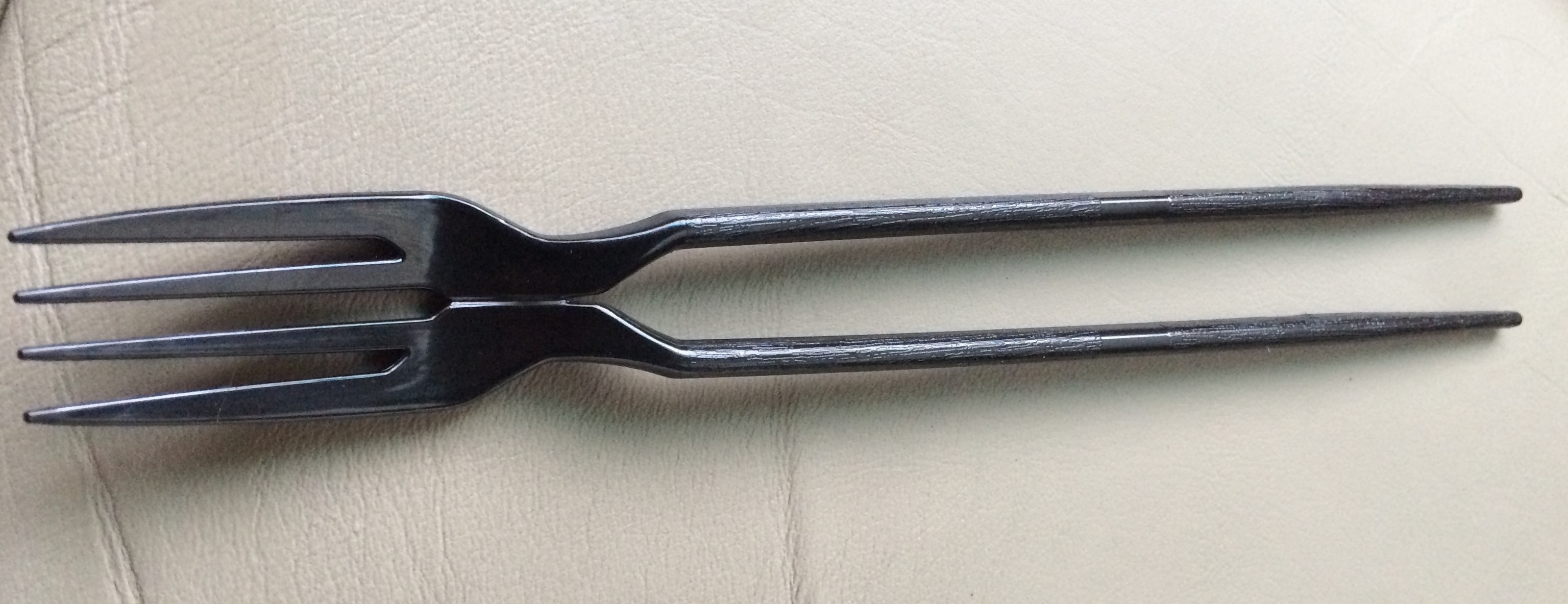
Consider the Spork. Everyone Else Is.
Consider the spork. A fast food and backpacking staple, the hybrid spoon-fork eating utensil’s utility is winning over the world of haute cuisine and inspiring other clever combinations.
The Michelin-starred restaurant D’O outside of Milan serves silky Risotto alla Milanese, which uses only local Italian saffron costing hundreds of euro per ounce. But don’t ask for a spoon, because Chef Davide Olandi serves his internationally renowned cuisine with sporks.
The first patents for sporks appeared in the U.S. in the late 19th century, as we transitioned from Downton Abbey to downtown factories. Sporks were likely reassuring at a time when a single diner could face scores of specialized utensils (bouillon spoon, fruit knife, oyster fork, porringer) at her place.
Having just one dining utensil option—spork—was a sign of loosening of social categories generally. In the same way, the spork today is one way Chef Olandi expresses his everyman approach to one-percent dining. (Lunch at D’O costs less than 20 euro and dinner is less than 50.)
To the modern mind, the dizzying varieties of eating utensils can be fascinating. It’s a special moment when a server places a fish knife on a 2015 table. But fascinating things can get overwhelming when you’re forced to face them three times a day and fascination stands between your hunger and actually eating.
The spork’s design itself is a throwback, resembling antique ice-cream forks. But when I pull out the couple of ice-cream forks in my collection, people are mildly interested; when I pull out my stainless-steel sporks, everyone cheers. There’s a no-nonsense, focus-on-the-food realness to a spork that jibes with our modern sensibilities.
Which is why sporks are such a great match for contemporary high-quality, low-fusiness eating. Sporks say: “Let’s cut out the white-tablecloth formality and just get to the good part—the food.” Sporks reflect dining and food trends today: more excellence, less formality.
Sporks have inspired other hybrid utensils, most notably the chork. Chorks, which are currently relegated to the fast-casual disposable-utensil category, are for people who are shaky on chopsticks and need fork training-wheels. A friend rightly noted that they look more like tweezers than chopsticks, and suggested that we call them “freezers.” It’s hard to imagine chorks existing without sporks.

For those still queasy about eating with a spork, call it by its French name, passepartout (“goes everywhere”). In French, passepartout also means a key that opens all locks, and is a word to describe someone who is well suited to and comfortable in any situation, from sporting events to the opera.
Or, in other words, a personality that goes from a dinner of hot dogs roasted over a campfire to meals handcrafted by the world’s finest chefs. When reaching for a utensil, consider the spork.





